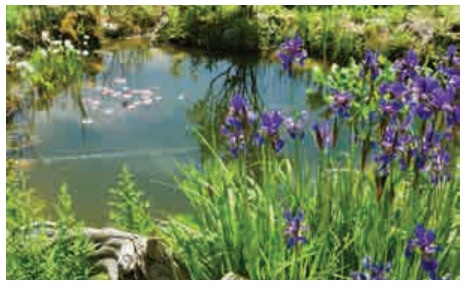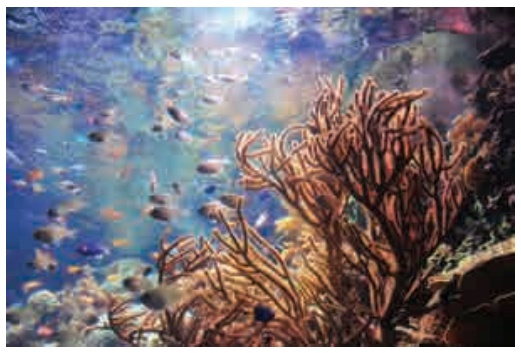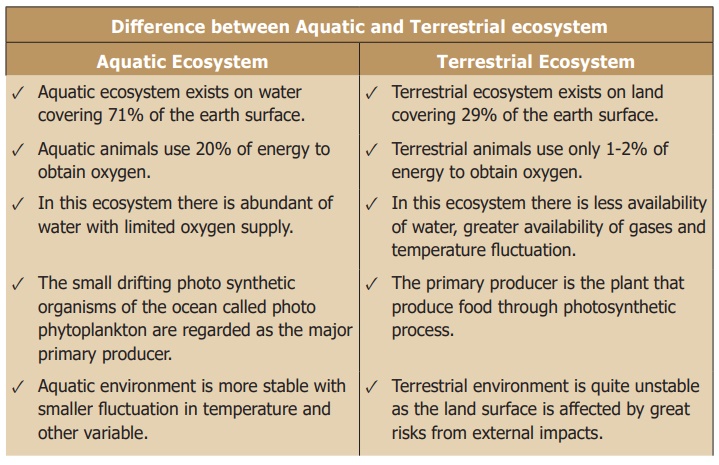Biosphere | Geography - Aquatic Biomes | 9th Social Science : Geography: Biosphere
Chapter: 9th Social Science : Geography: Biosphere
Aquatic Biomes
AQUATIC BIOMES
Aquatic biome is a group
of living organisms that live and interact with one another and its aquatic
environment for nutrients and shelter. Like terrestrial biomes, aquatic biomes
are influenced by a series of abiotic factors.It is broadly classified as fresh
water biomes and marine biomes.
A. Fresh water Biomes:
It comprises lakes,
ponds, rivers, streams, wetlands etc. It is influenced by various abiotic
components such as the volume of water, water flow, composition of oxygen,
temperature, etc. Humans rely on freshwater biomes for drinking water, crop
irrigation, sanitation and industry. Water lily, lotus, duck weeds etc. are the
common plants found here. Trout, salmon, turtles, crocodiles etc. are the animals
found here.

B. Marine Biomes:
They are the largest
aquatic biomes on earth. They are continuous bodies of salt water and provide a
wide range of habitats for marine plants and animals. Coral reefs are a second
kind of marine biomes within the ocean. Estuaries, coastal areas where salt
water and fresh water mix, form a third unique marine biome. As water provides
maximum mobility to marine organisms, nutrients are circulated more quickly and
efficiently here than the terrestrial biomes. Apart from animals, plants such
as kelp, algae, phytoplankton etc. also grow in water. Aquatic biomes are not
only important

Humans use aquatic biomes for water, food and leisure
activities. Some of the threats and issues to aquatic biomes are overfishing,
pollution and rise in sea level.

Related Topics